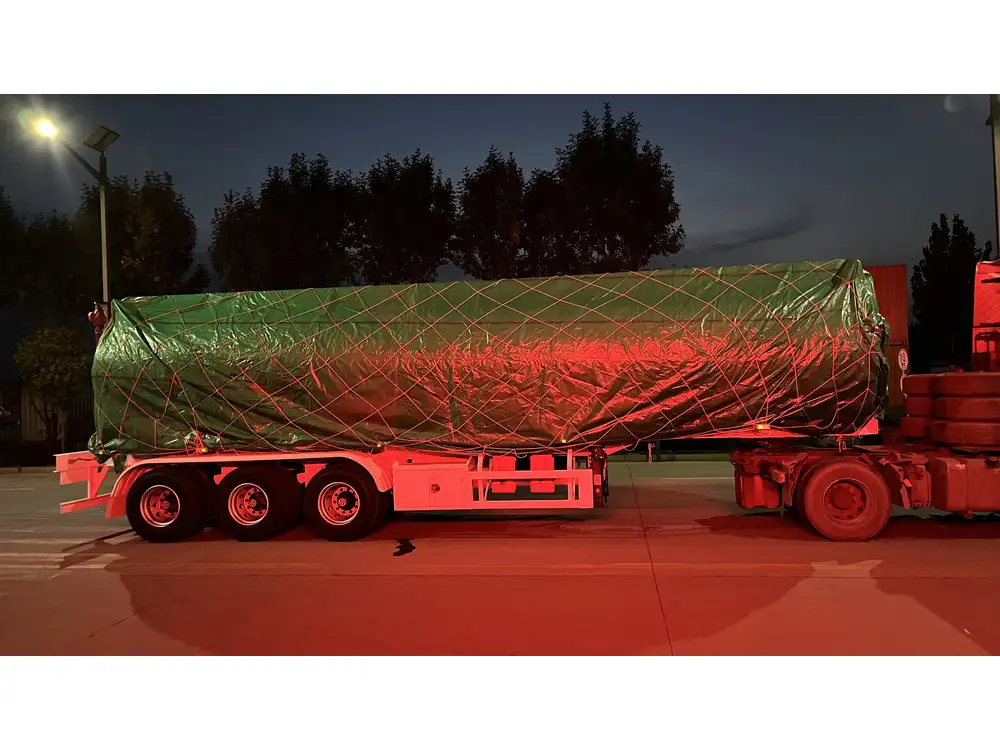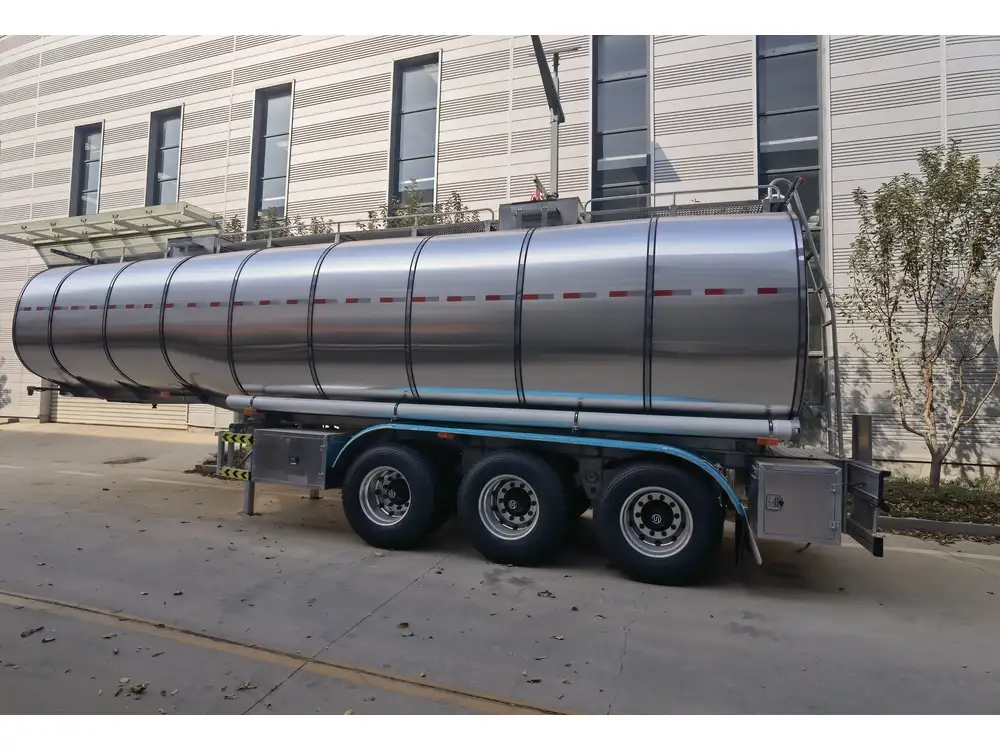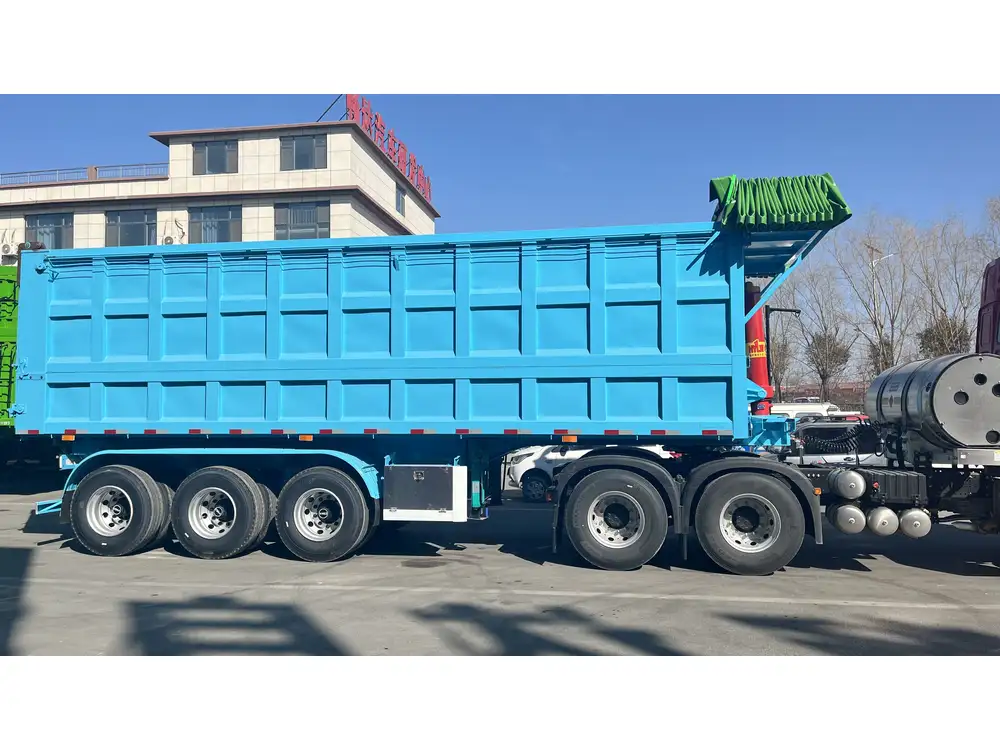In the world of transportation logistics, fuel efficiency and aerodynamic design are paramount in maximizing operational efficiency while minimizing costs. One innovation that has garnered considerable attention in this field is the trailer tail. In this comprehensive overview, we will delve into the intricacies of trailer tails, their benefits, and how they contribute to better performance in the trucking industry.
Understanding Trailer Tails
Trailer tails, often referred to as aerodynamic tails or boat tails, are specialized devices that attach to the rear of semi-trailers. Designed to improve airflow around the trailer, these structures enhance aerodynamics and lead to significant fuel savings. The mechanics behind trailer tails are rooted in the principles of fluid dynamics, where the goal is to reduce drag and enhance efficiency.
How Trailer Tails Work
To comprehend the workings of trailer tails, consider the following key elements:
Aerodynamic Design: Trailer tails taper off towards the rear of the trailer, resembling the design of a boat tail. This design minimizes turbulence as air flows around the vehicle, creating a more streamlined profile.
Material Composition: Most trailer tails are constructed from lightweight materials such as fiberglass or composite materials, which not only reduces their weight but also enhances durability.
Deployment Mechanism: Many modern trailer tails are designed to deploy automatically while in transit, ensuring that they do not interfere with loading and unloading operations at docks.

Types of Trailer Tails
There are several types of trailer tails that cater to different needs and configurations:
| Type | Description | Advantages |
|---|---|---|
| Fixed Trailer Tails | Permanently affixed to the trailer for continuous aerodynamic benefits. | Consistent fuel savings, lower drag |
| Retractable Tails | Adjustable and can be stowed when not in use. | Versatile use, less impact on loading |
| Folding Tails | Can be folded up against the trailer sides when not in use. | Space-saving, protects the tail |
| Active Aero Systems | Electronically controlled tails that adjust based on speed and driving conditions. | Optimal aerodynamics at varying speeds |
Benefits of Using Trailer Tails
Implementing trailer tails has proven to be advantageous in various aspects:
Fuel Efficiency: Incorporating trailer tails can lead to fuel consumption reductions of up to 10%. Given the fluctuating prices of fuel, this translates into significant cost savings over time.
Reduced Emissions: With better fuel efficiency comes lower greenhouse gas emissions. By utilizing trailer tails, trucking companies can do their part in reducing the environmental impact of their operations.
Improved Stability: Aerodynamic improvements can lead to enhanced vehicle stability at high speeds, minimizing the risk of turbulence and sway.
Prolonged Vehicle Life: With less strain on engines due to improved aerodynamics, the lifespan of the vehicle components can be extended, reducing maintenance costs.
Innovative Marketing Edge: Using fuel-efficient technologies like trailer tails can enhance a company’s image as environmentally responsible, appealing to clients who prioritize sustainability.
Optimal Installation Practices
The effectiveness of a trailer tail is highly dependent on its proper installation. Here are some best practices to ensure optimal performance:

Mounting Location and Height Requirements
Placement Matters: Trailer tails should be installed as close to the end of the trailer as possible, ensuring they catch the air flowing around the vehicle.
Height Alignment: Ensure that the trailer tail aligns with the maximum height restrictions set by regulations to prevent any issues during transport on highways and overpasses.
Regular Maintenance and Inspections
To maintain their benefits, periodic inspections of trailer tails are essential. Here’s what that involves:
Visual Inspections: Regularly check for any signs of wear, tear, or damage caused by cargo or road debris.
Functional Tests: For retractable or active systems, ensure that the deployment mechanisms function correctly.
Cleaning: A clean surface ensures optimal aerodynamic performance, minimizing additional drag caused by dirt and pollutants.
Costs and ROI Considerations

Initial Investment
Cost considerations play a significant role in adopting trailer tails. While initial investments can vary widely based on material and type, they generally fall within the range of:
- Fixed Tails: $1,500 to $5,000
- Retractable Tails: $2,500 to $6,000
- Folding Tails: $3,000 to $7,000
Analyzing ROI
To better understand the return on investment (ROI), organizations should consider factors such as:
Weekly Mileage: Operating heavy-duty trucks across long distances amplifies the benefits of trailer tails.
Fuel Price Fluctuations: With fuel prices being volatile, a drop in consumption due to trailer tails can significantly affect operating costs.
Environmental Incentives: Some regions offer grants and incentives for companies that invest in fuel-efficient technologies.
Using the formula ( \text{ROI} = \frac{\text{Net profit}}{\text{Cost of investment}} \times 100 ), organizations can use real data to gauge the fiscal merits of installing trailer tails.
Case Studies on Trailer Tail Impact
Real-world applications provide compelling evidence for trailer tail effectiveness. Here’s a brief overview of notable case studies:

Case Study 1: Major Logistics Company
- Implementation: A leading logistics company installed fixed trailer tails across their fleet.
- Results: The company reported a 9% increase in fleet fuel efficiency within the first three months, ultimately leading to an annual savings of \$250,000 in fuel costs.
Case Study 2: Green Freight Initiative
- Project: A cooperative of freight carriers adopted various aerodynamic enhancements, including trailer tails.
- Outcomes: Collective data indicated an average 12% reduction in greenhouse gas emissions, promoting sustainability within the industry.
Addressing Potential Concerns
Adopting trailer tails is accompanied by common concerns. Here we address them:

Aesthetic and Design Considerations
While some may argue that trailer tails disrupt the aesthetic of the trucks, modern designs prioritize sleek profiles that integrate without compromising the vehicle’s visual appeal.
Regulatory Compliance
Trailer tails need to comply with state and federal regulations which may vary. Engaging with local transport authorities to verify compliance before installation ensures a hassle-free integration.
Conclusion: The Future of Transportation Efficiency
In summary, trailer tails epitomize innovation in the trucking industry, leading to remarkable advancements in fuel efficiency, environmental sustainability, and cost savings. As logistical demands escalate and fuel prices continue to fluctuate, the adoption of trailer tails signifies a prudent step towards enhancing operational efficiency.
Innovative technologies and aerodynamic improvements stand at the forefront, driving the industry towards a greener future. In this context, trailer tails emerge not merely as advantageous add-ons but as vital components in modern logistics, paving the way to a sustainable trucking environment that caters efficiently to the increasing economic and ecological challenges of our time.



